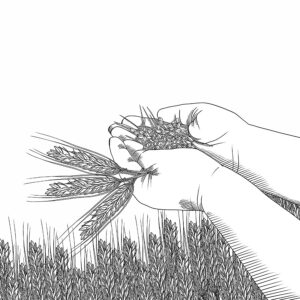An important goal for any craft distillery should be growing on-site visitor engagement and experience satisfaction. Firsthand, tangible experience creates a connection between person and product (or brand) that most other forms of marketing cannot match. Marketing research shows the potential customer path as a progression from brand awareness to brand loyalty and ideally to brand affinity. When done right, distillery visits have the potential to build on all three.
For instance, it is not a stretch to imagine someone first experiencing your spirit in a bar cocktail (brand awareness), visiting the distillery and falling in love with your products, prompting purchase of your brand exclusively (brand loyalty), and then, after bringing friends and family back for multiple satisfying experiences, becoming an ambassador of sorts, telling everyone they know that this spirit is the only one they ought to be buying (brand affinity).
To move potential customers along the brand relationship journey via distillery visits, it is critical to create and deliver engaging, satisfying experiences. A basic and approachable way to design or enhance the distillery visit experience is by using the five senses model. While the approach was originally conceptualized as a way to structure the design of tangible products, it is highly applicable to designing experiences as well, such as a distillery visit. Below is an outline of each of the five senses — seeing, hearing, smelling, tasting, and touching — with ideas and examples presented regarding their application within a distillery context.
 See
See
“A watched pot never boils.” —Anonymous
There are two key points when it comes to visual appeal: cultural (brand) consistency and drama. These are directly tied to ideas of authenticity and memorability, respectively, which are key components to any marketing strategy. Cultural consistency in this regard refers to an aesthetic that is authentic to your brand culture (image, values, process, location, etc.) and consistently presented across the entire space. Depending on the distillery, the aesthetic could be highly polished and clean on one end of the spectrum or low-tech and “country” on the other. Both have the potential to convey authenticity if carried consistently throughout the distillery.
Drama, with regard to the aesthetics of space, means creating a visual experience that is slightly jolting in a way that is memorable. Not an uncommon motivation in architectural design, there are ways that drama can be created in existing distillery space, from the use of the structure itself (i.e., the building or equipment) to design and decor choices within the space. For instance, is there a way to talk about your stills before they can be seen, then create a point where they are revealed (around a corner, through a door, etc.)? Even a super-sized photo of a really small but really important ingredient, such as a wheat stalk or juniper cluster, can provide a dramatic aesthetic within a space.
It’s always exciting to think about the interior design of your distillery experience, but remember: The distillery visit experience starts at the curb or parking lot, not when a person enters the distillery itself. Don’t forget to attend to exterior details that make that first impression when someone comes onto your property.
 Hear
Hear
“If it sounds good, it is good.” —Duke Ellington
Unlike sight, sound can be a much more difficult sense to engage dynamically. The distillation process itself, mediated by modern techniques and equipment, tends to be relatively quiet (bubbling, boiling, and dripping liquid doesn’t make much noise!). However, there are three “sound” elements to note that are accessible (if not evident) in most craft distilleries: spoken product (tasting) and process (tour) narratives, technology-delivered content, and simple bar noise.
When deciding on any formal narrative or simply talking points for tours and tastings there are two important lessons to keep in mind. First, facts should be wrapped in stories. Yes, you use a level-two char and finish in port barrels for six months, but more importantly, why did Bob the head distiller decide to do it that way? Second, don’t be afraid to stray from those predetermined points for the sake of speaking to your particular audience. A gin tasting for a group of older couples should be different from the “same” tasting to celebrate a college graduation.
Audio (and visual) elements, for better or worse, are increasingly mediated through technology. The lesson here is: Don’t be afraid. There are a number of apps that are easy to set up and easy for guests to use. Creating audio/visual content, including integrating it into your space (via a mounted speaker/monitor, for instance), is relatively cheap and easy. And, of course, the best source of noise for most spirit drinkers everywhere — the rattle of ice and drink in a cocktail shaker — is readily at hand. It’s definitely okay to play that up (and don’t forget the ambient music).
 Smell
Smell
“A good fragrance is a really powerful cocktail of memories and emotion.” —Jeffrey Stepakoff
Smells can evoke some of the strongest memories. Aromas are also the biggest factor in flavor perception and therefore fundamental to any distillery experience. Within the daily operations of most craft distilleries there are some days when smells are ever-present (e.g., peak fermentation, barrel blending), while other days are relatively sterile. However, there are a number of “points of contact” possible within any distillery visit when it comes to the sense of smell. For instance, every rickhouse has a distinct smell, as do the different char levels on a barrel or different varieties of gin botanicals.
The key is to think about ways that smells can be consistently part of any visit, no matter the day it occurs. Keep an empty barrel on hand without the lid and let folks stick their head in for a big whiff, or fill smelling jars with heads, hearts, and tails of a standard run to help describe the difference. Smell happens with distillation, no matter the spirit; the trick is finding ways to bring that to guests in an accessible and consistent way.
 Taste
Taste
“I have the simplest tastes. I am always satisfied with the best.” — Oscar Wilde
Taste is likely the most obvious of the senses to engage during a distillery visit. Sure, people love seeing the stills, but they really want to taste the spirits, right? The key here is to vary it in some way from what we consider typical — i.e., the wine-tasting model of small samples, sips, and talk about taste.
First, let the guests lead the way. Above all else, taste is subjective. While you may have wanted to emphasize the vanilla notes or cane juice mouthfeel, the customer wants something they perceive as good — however accurate (or inaccurate) their perception is to its “true” flavor. Like any good budding relationship, be (or at least act) genuinely interested by asking lots of questions of guests. It is also helpful to have a sense of guests’ experience with particular spirits. This can be a very simple question to ask and a great starting place to guide any tasting and cater it to the individual.
Second, get creative with both what you are tasting and how it is done. Remember, most spirits outside your tasting room are mixed in cocktails or at minimum poured over ice. Think about that with regard to designing a tasting. If allowed where your distillery is located, why not batch up a good cocktail that highlights your spirit in the way you want it to? Working in the opposite direction, could the component ingredients of a spirit or even ancillary products be a part of the tasting experience? A stick of sugarcane to chew or a bourbon-barreled honey snack, for instance?
 Touch
Touch
“Touch has a memory.” —John Keats
Touch, more than any of the other senses, is ever-present in our daily lives. We end with touch because it can be an important aspect of all the other senses — picking up something to smell or taste, opening a door to see the distilling floor, or feeling the texture of a barrel and the sounds your hand makes running across it, for example. Much like sight, touch begins as soon as a visitor reaches the distillery. Is it a gravel parking lot or paved? Is the entrance curbside or is there a natural path to the front door?
Feeling something with your own hands, specifically, has a way of reinforcing an experience. We all know what sugar is and have seen boiling liquid, but when you feel the slight give of fresh sugarcane when you squeeze it in your hand or feel the heat on your face coming off a still going full tilt, it becomes a very different and more weighty experience. Another perspective on touch takes a broader approach to the feel of a place: How warm or cold are different parts of the facility? How much does a typical visit take place outside versus inside? Is the experience confined or spread out?
When bringing it all together and thinking through a (potential) five senses distillery experience, the goal is not to overwhelm the senses but instead to create a balance of input to the visitor. Some senses are simply harder to engage than others. That’s okay and expected. The key is to find opportunities within each distillery visit to engage guests through each of the senses in ways that enhance the experience. Be creative and find what works for your distillery.








